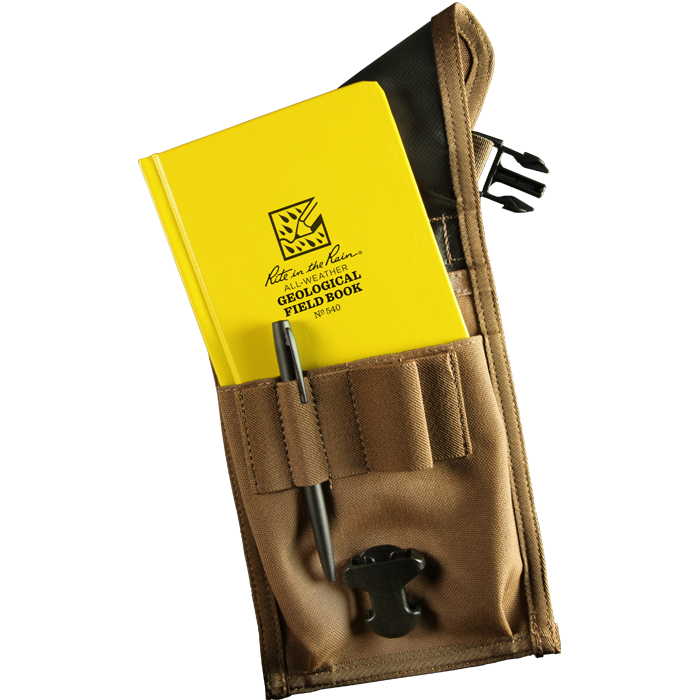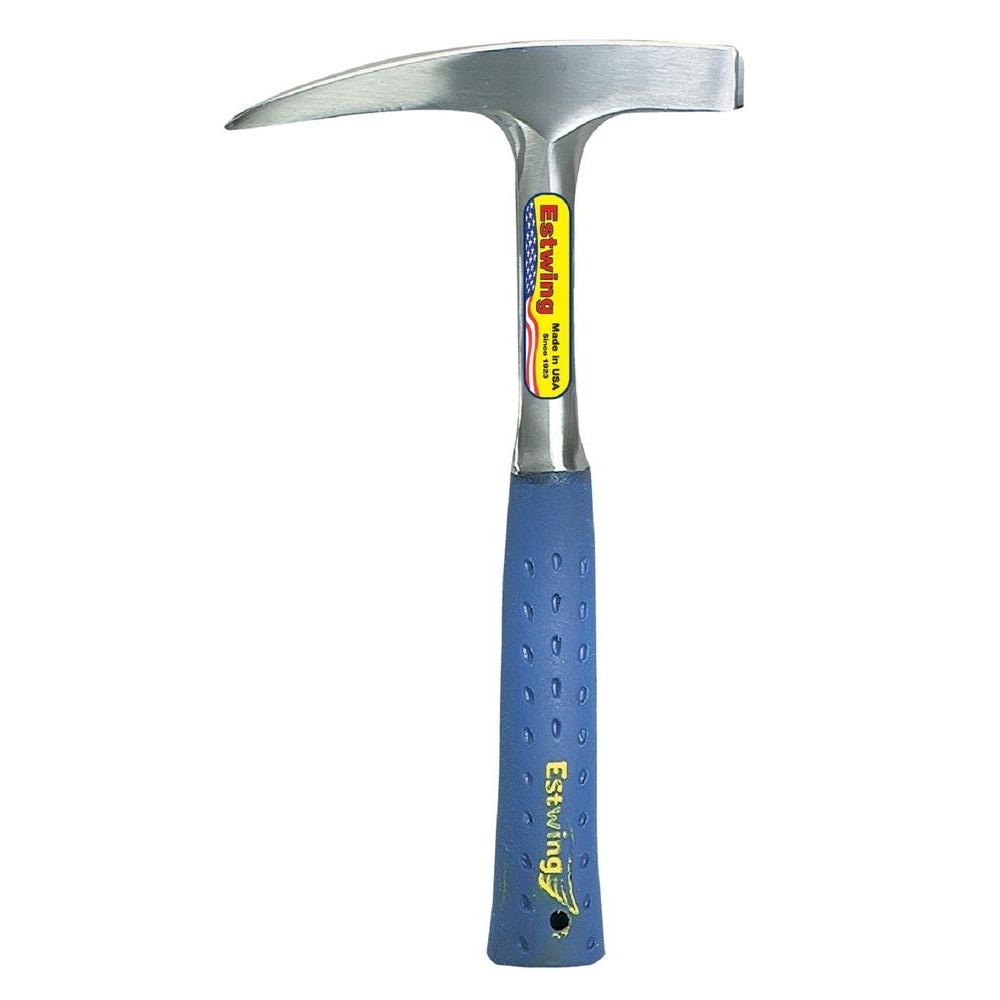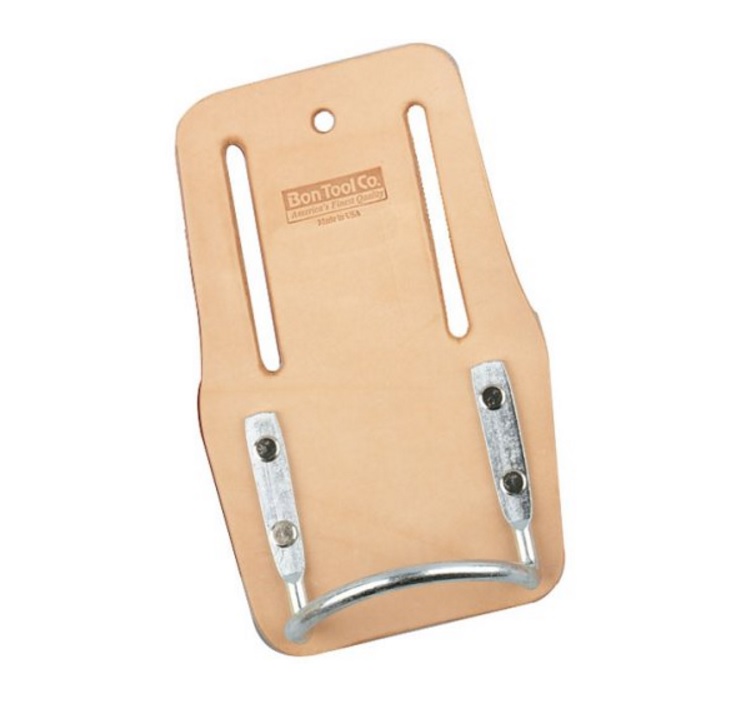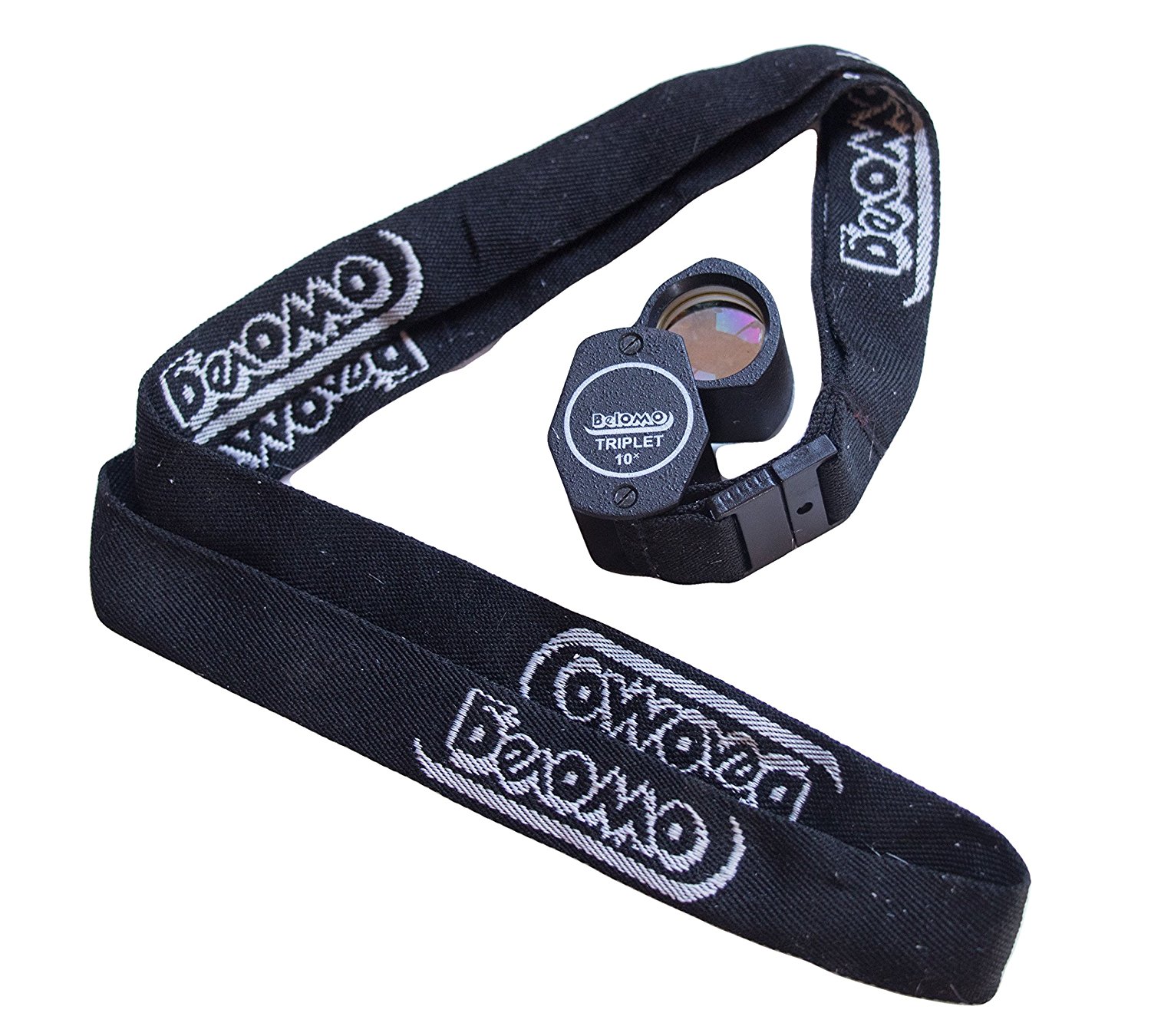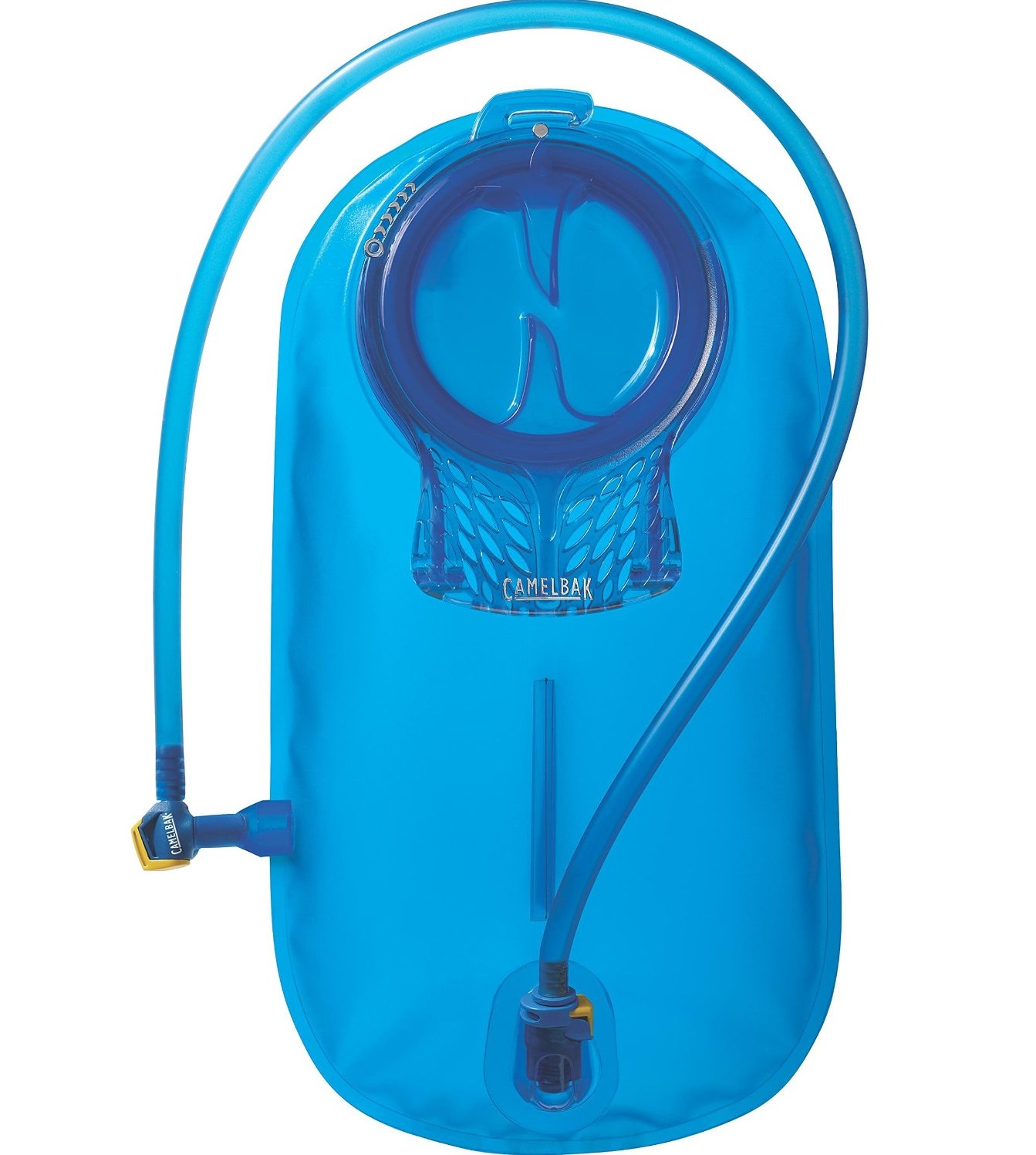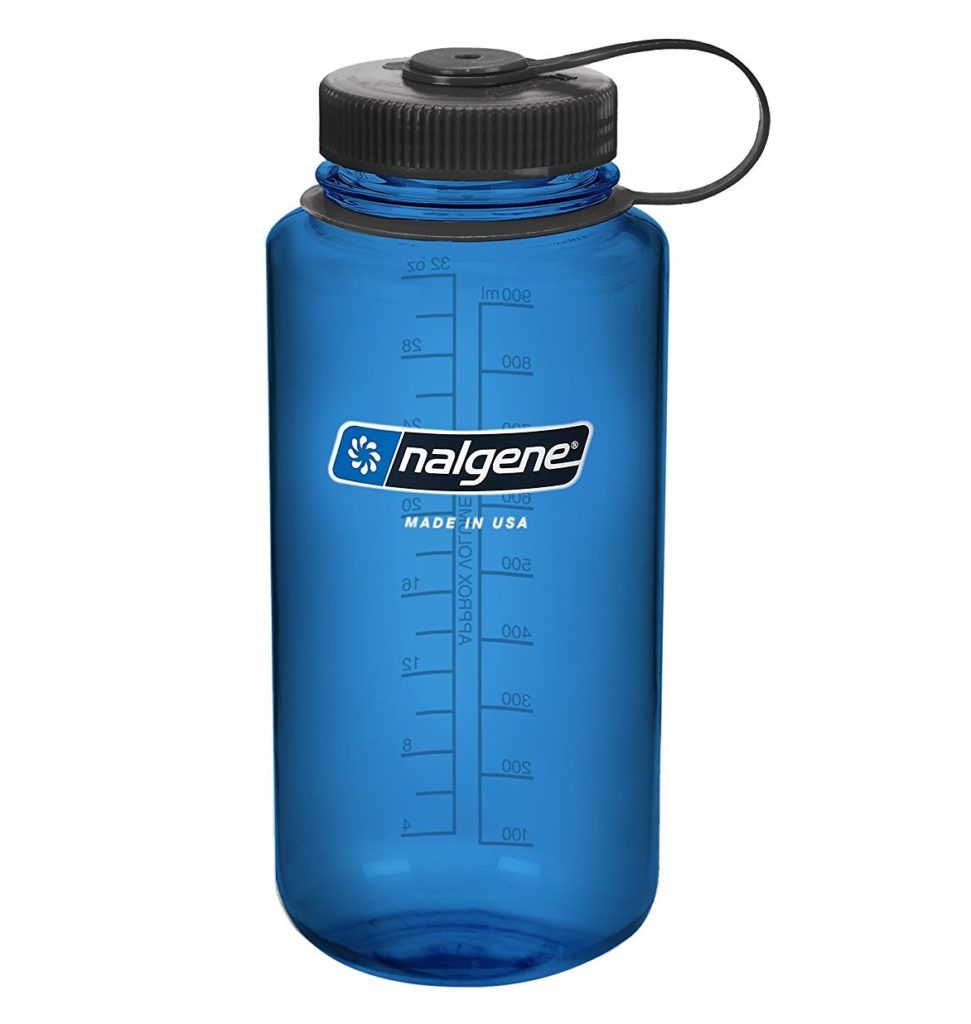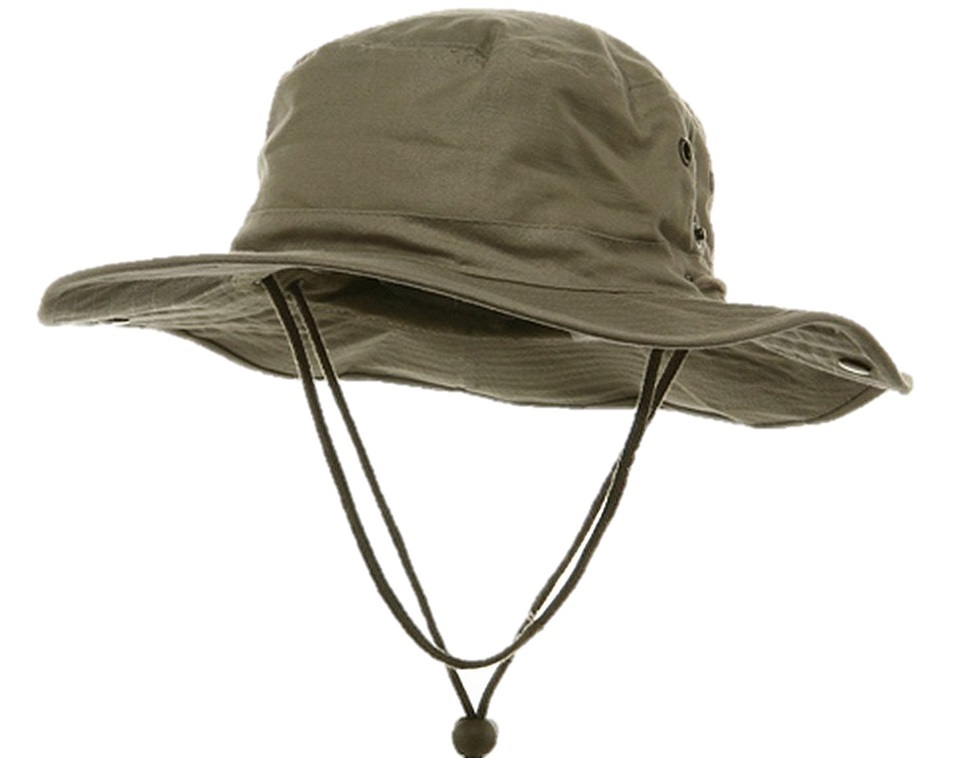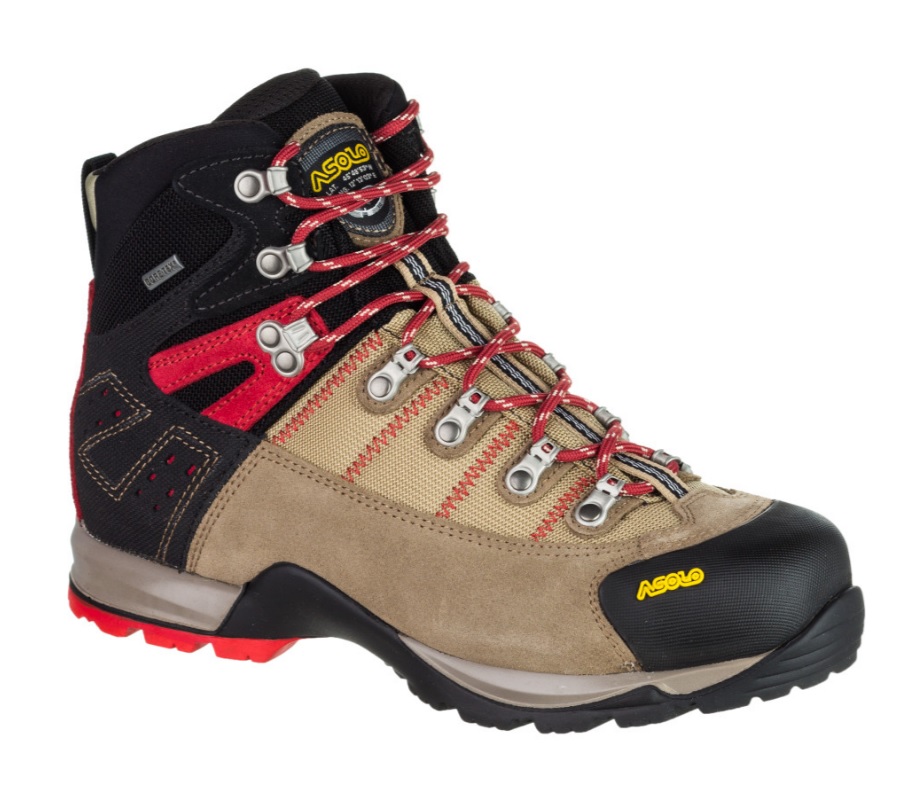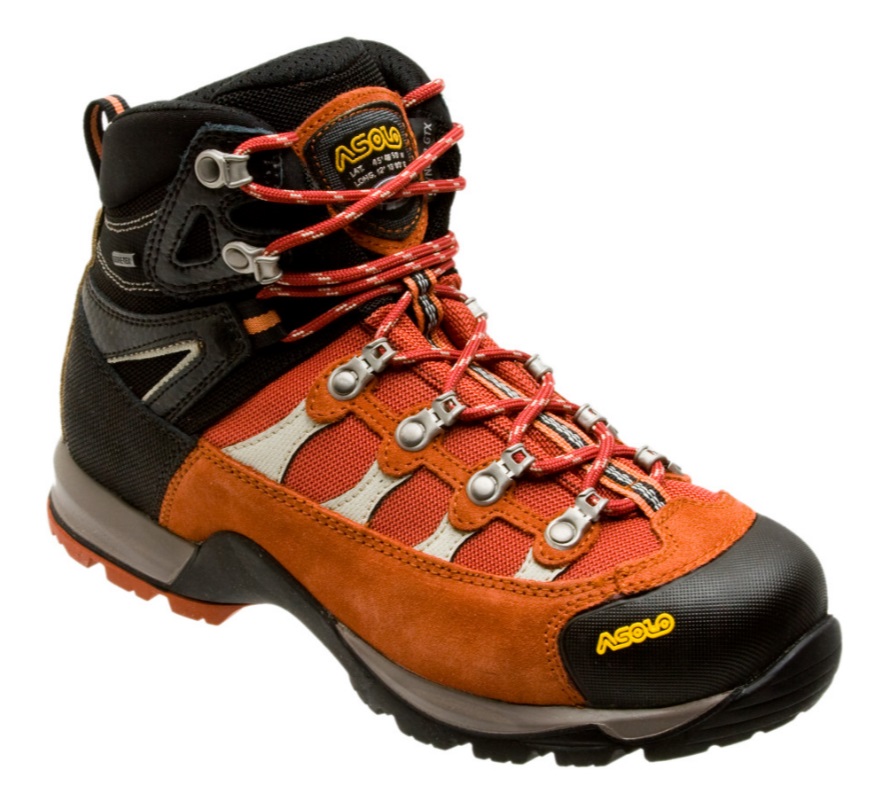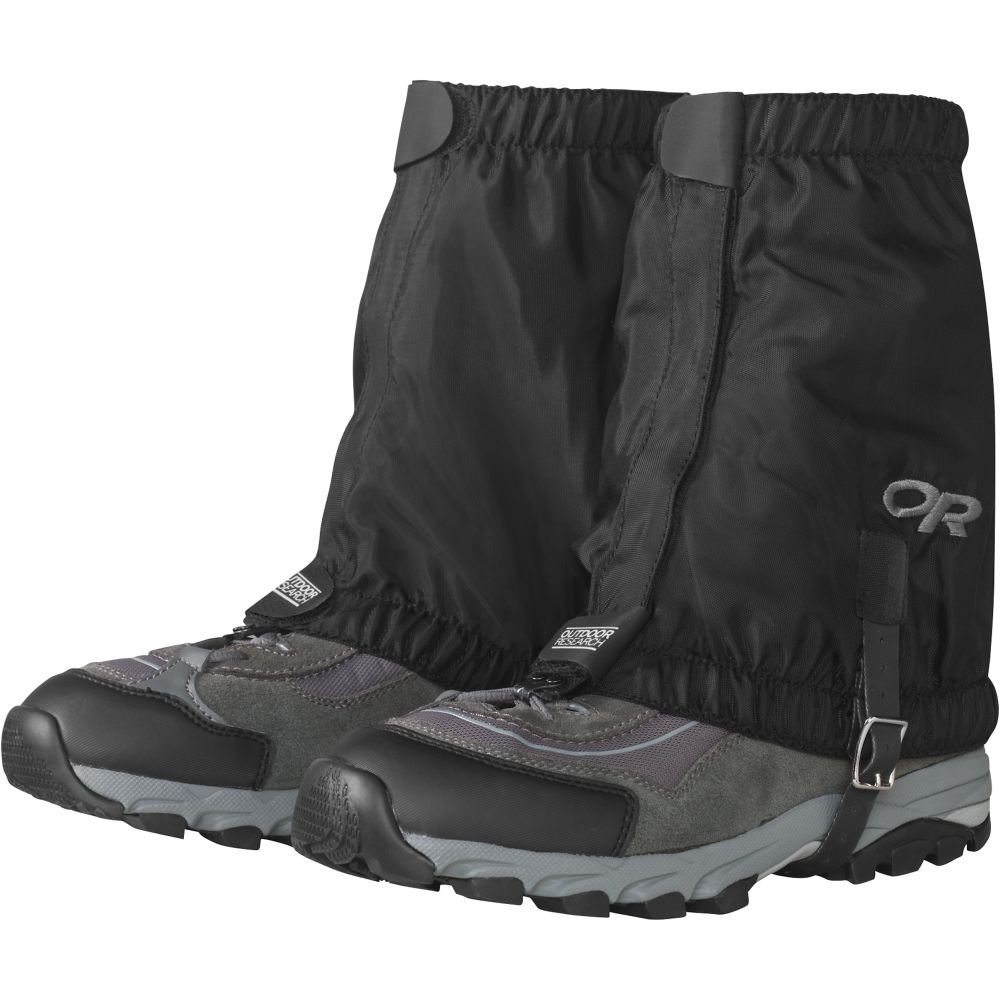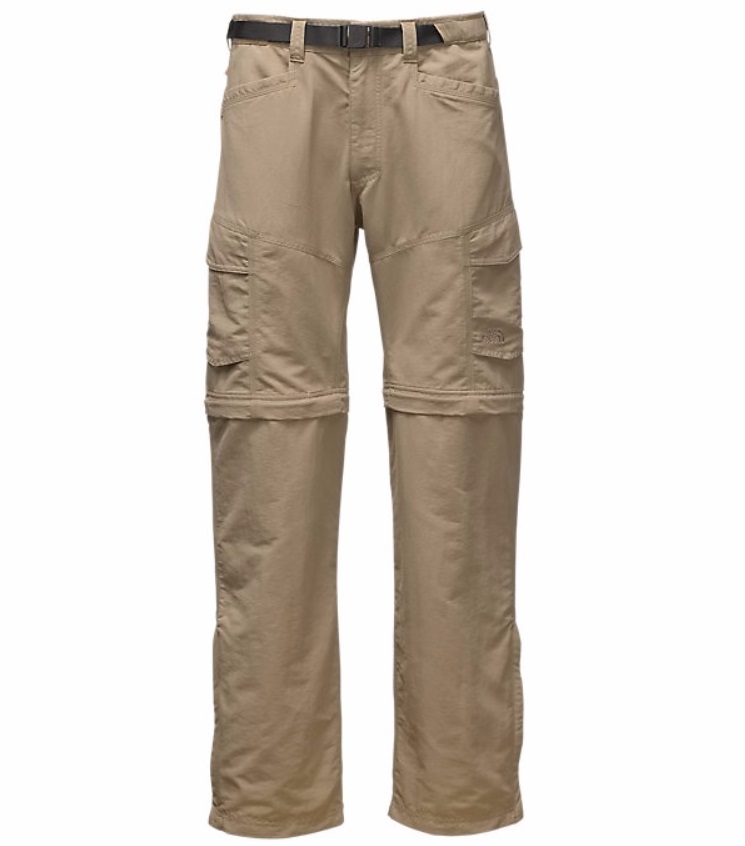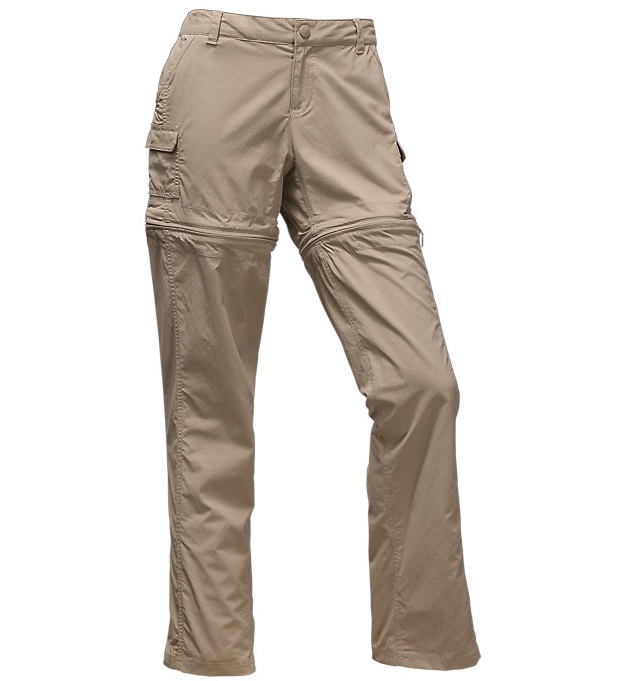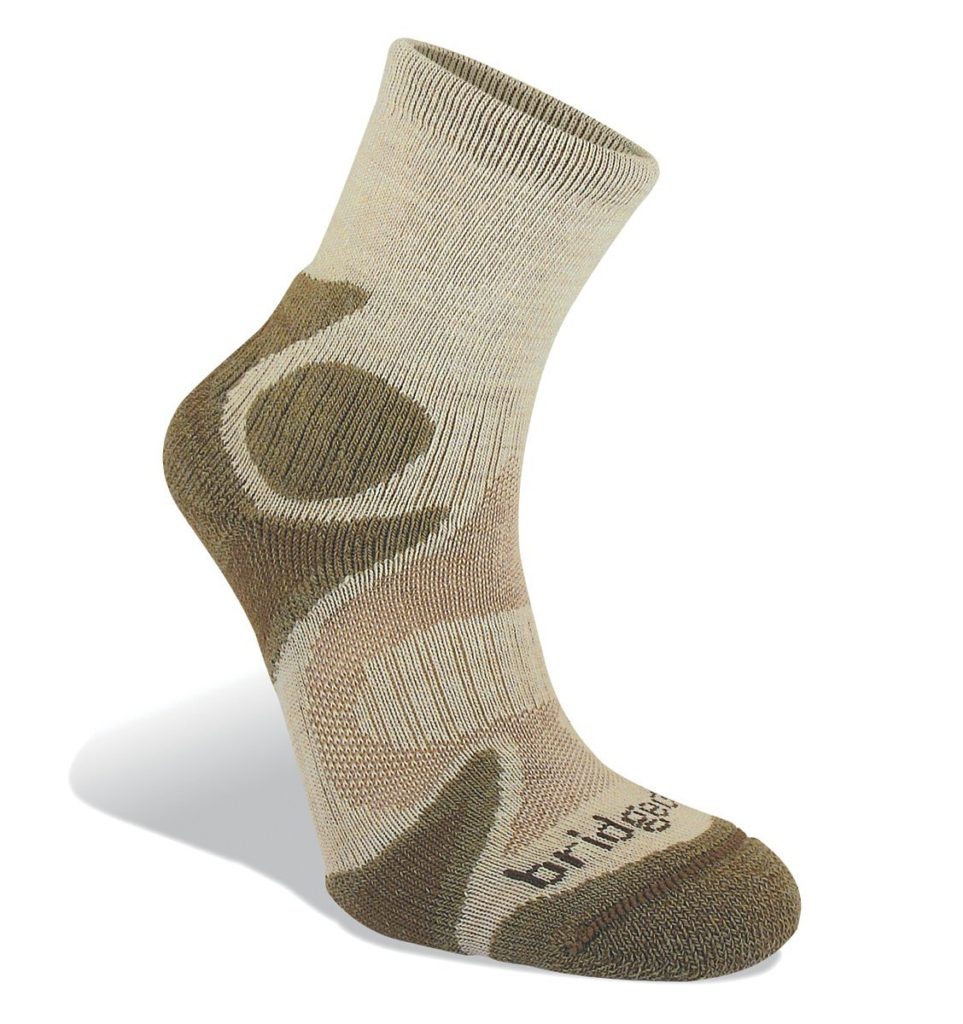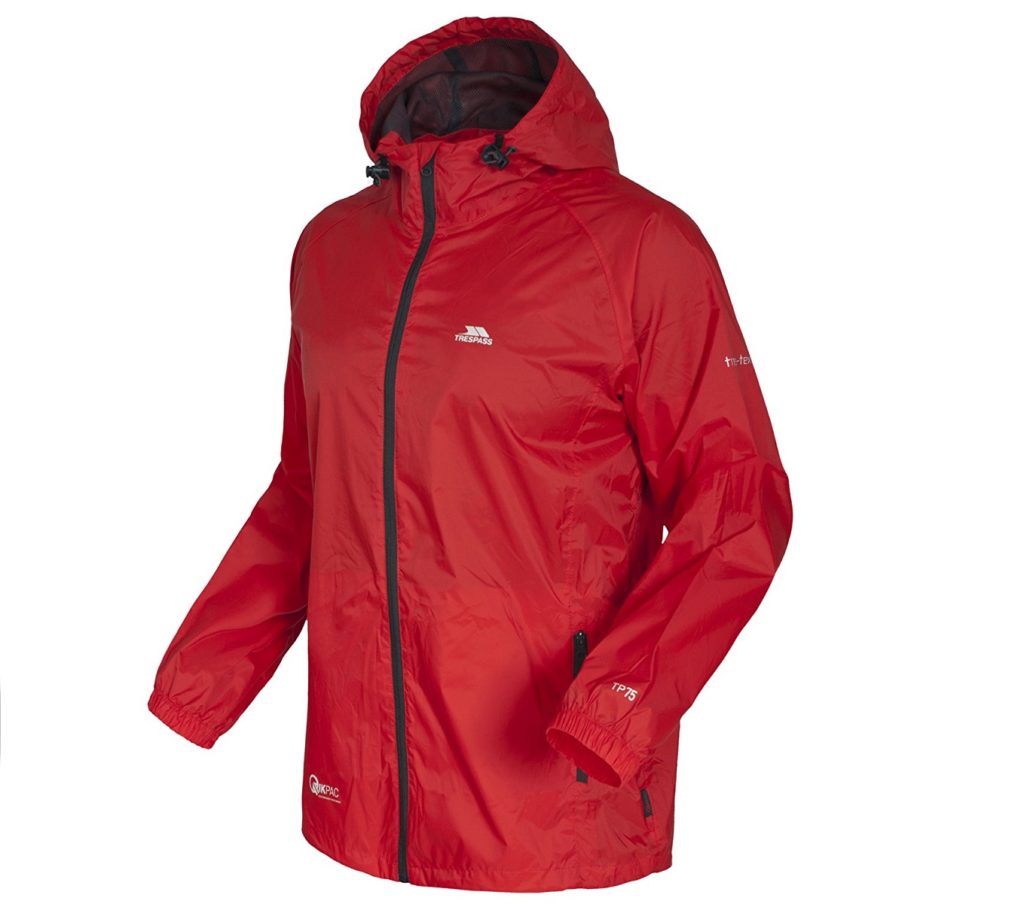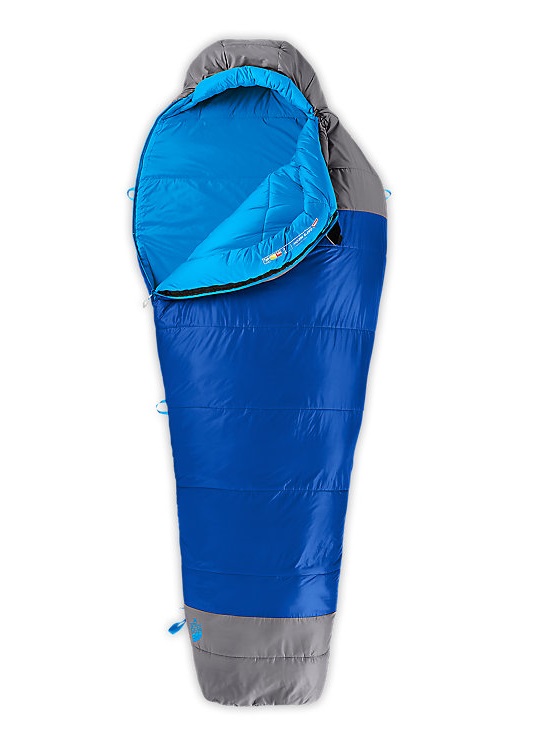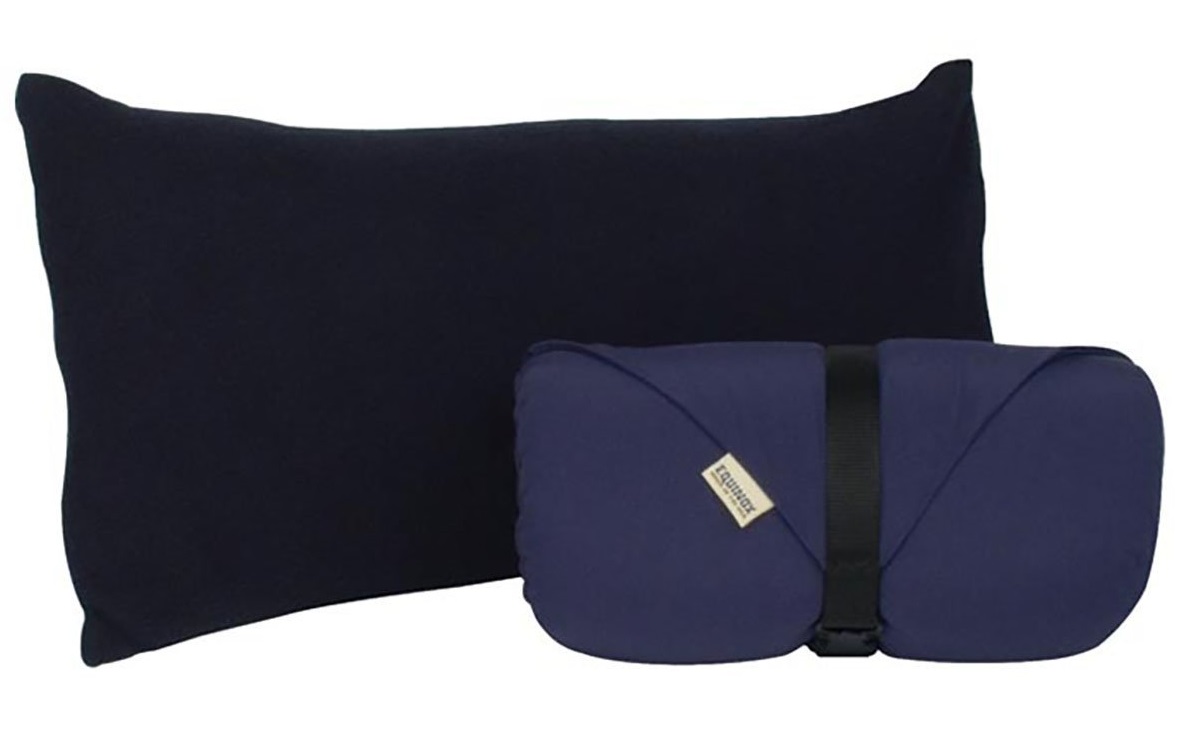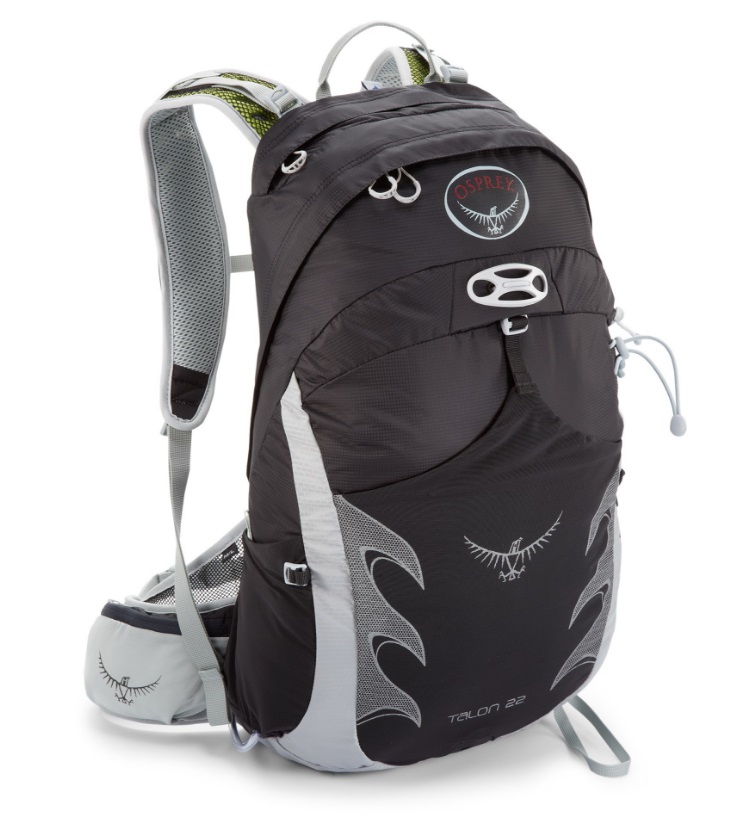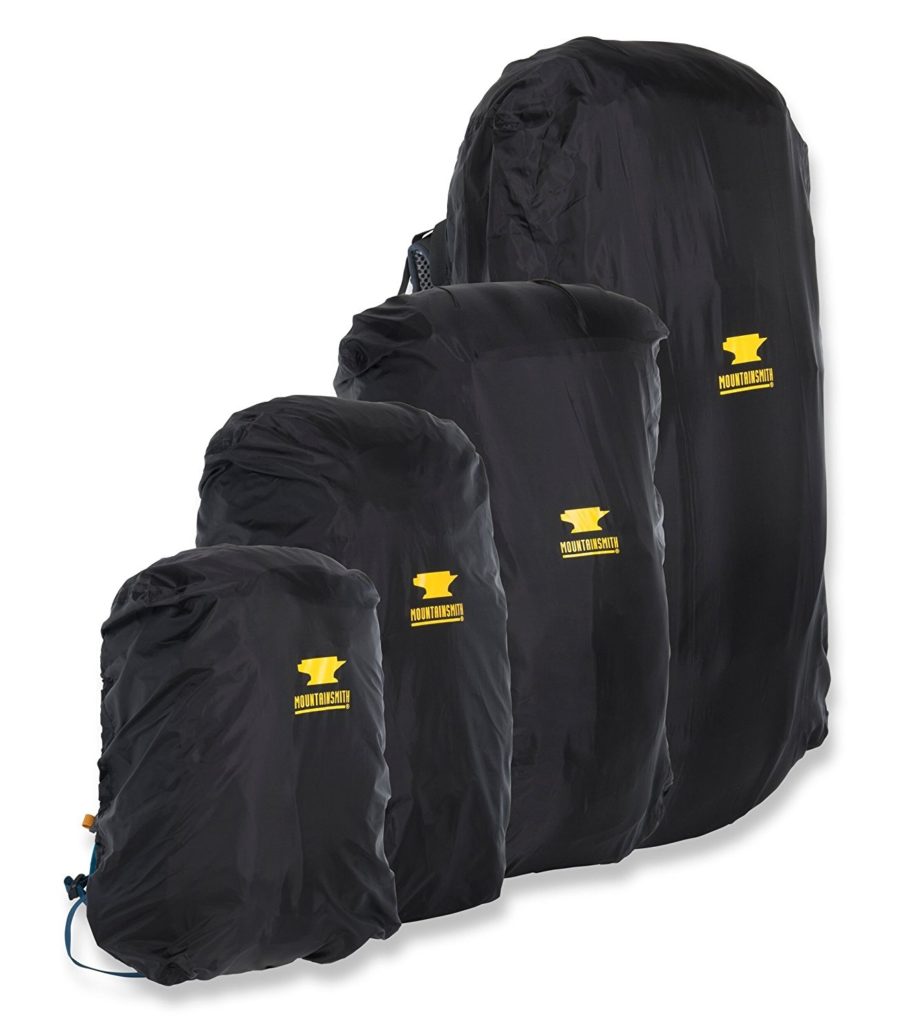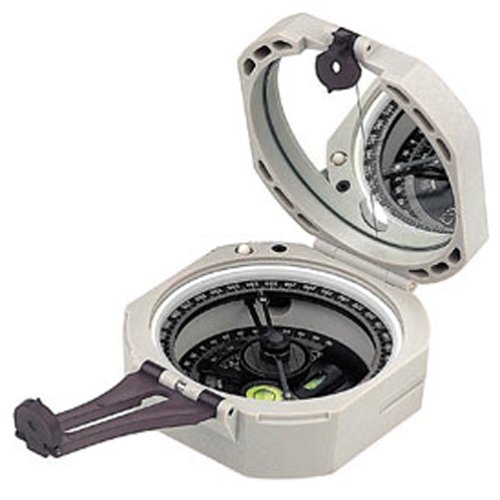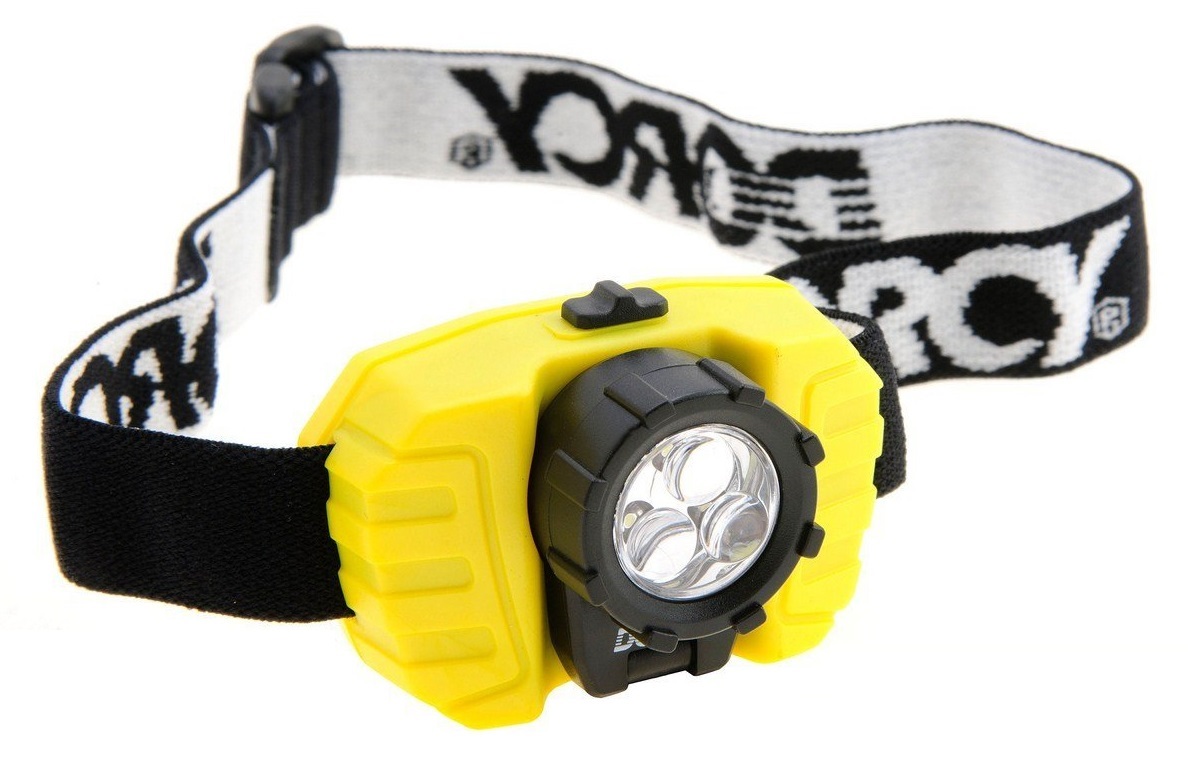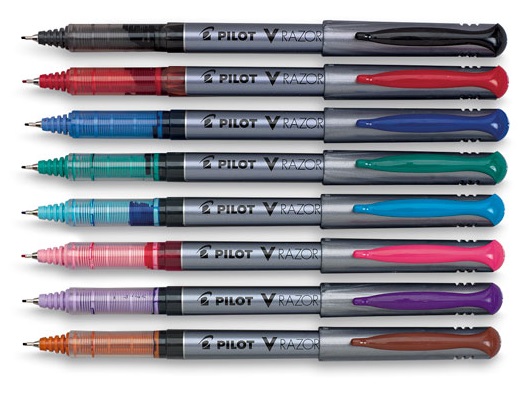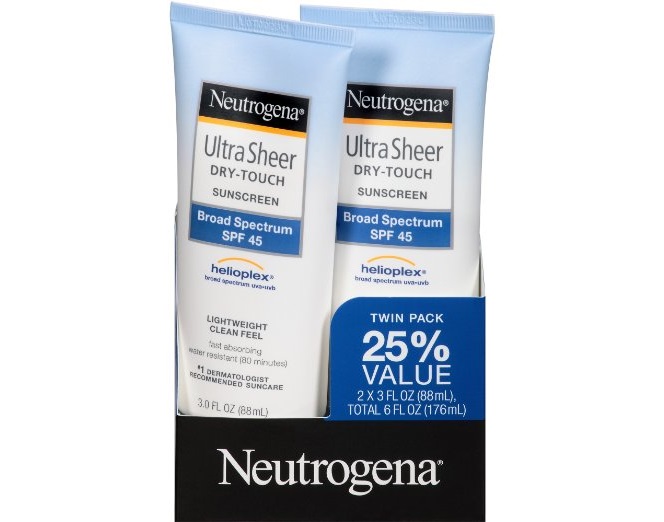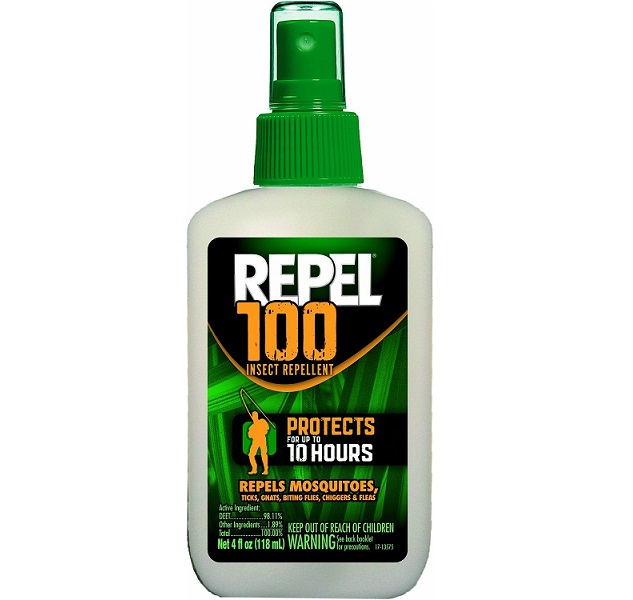The Field Camp Essentials
What do I need for field camp? This question is asked every single year by junior and senior geology students yet there is no website that really helps or elaborates on the equipment you need. Yes, there are university websites that list general items or websites that have standard equipment, but they do not really identify what items are best for field camp.
Before I continue with this post, you may be asking – what does this guy know about field camp and equipment? Well, good point! My background is in geology, both my undergraduate and graduate degrees, and I have been on three field courses. My first one was the standard “field course,” like the one all undergraduate geology students need in order to get a bachelor’s of science degree. The field camp I went to was fairly large (I prefer not to name drop) and was located in Montana (like many other field camps) for six weeks. That was the first time I really experienced mountains since I am from the east coast, so it was a good wake up call to what geology could really be. The other two field courses I attended were shorter courses that I needed for graduate school; each was a week and half long.
Like most geology students, the best way to learn is to see, feel, touch, and even taste and smell the rocks and environment in person. As a result, the field equipment you need for field camp is also the field equipment you will need to be a geologist. What I am getting at is – the equipment you are buying for field camp, and even to be a geology student, is an investment. The plan is to be able to continually use this equipment for the rest of your schooling and hopefully for when you get a career in a geology related field!
There are a lot of people out there who know a lot, are avid outdoorsy people, and overall, have a lot more field experience than I do. The point of this post, however, is to really help you gauge and identify what you want and need for field camp. Having gone through this experience more than once, I like to think I have an idea of what I am talking about.
As I mentioned before, my field camp was located in middle-of-nowhere Montana, and the other two field courses were located in the Pacific Northwest. These places are rugged and having the proper field equipment is of utmost importance in succeeding during your day-to-day tasks.
Instead of continually chatting, let’s get to the point now. Below are items that I highly suggest getting. Not only will they be great assets in the field, but many of them are also investments (like previously mentioned) so you will only need to buy it once and it should last you many, many years. I also want to emphasize, with equipment, getting the cheapest item is not always the best idea. Quality is very important!
Lastly, for field geology, there are three vital items you need – a field notebook, a rock hammer, and a hand lens. These are top tier items that you will need to provide yourself, the field camp you are going to will not lend these items out.
The Field Notebook
One of the most important pieces of field equipment is the field notebook. Throughout the entire duration of your field experience you will use it to record your notes, observations, etc. What is important here is that you need something that is going to withstand the elements (i.e. weather and water).
There is one notebook brand out there that is made to endure the most extreme conditions – the Rite in the Rain. Basically, this notebook is “the notebook” to have if you are working outside. The Rite in the Rain notebook is made with a paper that has a special coating that creates a unique moisture shield, essentially making it all-weather proof. If you want to read more about it, go to my page outlining the Rite in the Rain product, which includes additional products they make.
Nonetheless, what is great about the Rite in the Rain notebook is that you can drop it in water, like a river you most likely will be standing in at some point during field camp, and all your notes will stay intact. The pages won’t come apart, the ink wont smudge; the only thing that is going to happen is that the pages will get a little crinkly when it eventually dries. There is no other notebook out there that has the Rite in the Rain dependability.
Rite in the Rain even makes a special notebook for geologists! And yes, this is the notebook I recommend getting. This thing is invaluable with its reference material in the back, has a hard cover, and is small enough to hike with and to stick in your field fanny-pouch (as I like to call it). To spare regurgitation, here is a review on it – if you want to learn more about the reference sections and about the notebook itself.
For a notebook, it is slightly pricey – I know. I wouldn’t recommend it if it wasn’t so amazing, seriously, but it is. I filled one of these notebooks up during my six week long field camp and ended up buying another. In essence, this notebook can take a beating and withstand anything. I’ve seen people drop it in rivers, it get run over by an SUV, people sweat all over it and it is still usable. You are going to be outdoors for at least a month and you need something that is going to hold you notes together no matter what the elements are. The Rite in the Rain geology notebook is what you want.
IF you don’t mind spending a little bit more, you can kill two birds with one stone. In addition to making a geology specific Rite in the Rain notebook, Rite in the Rain sells a bundle package which includes the geology notebook, their all-weather field pen, and their belt pouch (field fanny-pack). This is actually what I bought for my field camp. This thing is great because the pouch has belt clips, so you can just slide the pouch over your belt or pants. It is very durable and is able to hold your Rite in the Rain notebook, a few pens and pencils, and even an acid bottle. Having a field pouch is great because it allows you to have you notebook right at hand while you are hiking, so you don’t have stop all the time and dig through your backpack for your notebook.
The Rock Hammer
The rock hammer falls into the category of buying it once and using it for as long as possible. Every geologist has a handy-dandy rock hammer. I got mine for field camp and have been using it ever since. Having a rock hammer is essential to being a geology student. Every time you go out into the field, you will use it.
There is one brand out there I recommend and that is Estwing. Their hammers are durable, made of steel, and are sure to last a long time. They make a wide variety of lengths and types so the type of field work you will be doing may influence the type of hammer you want to get. Estwing hammers typically have a blue-nylon, rubbery handle which has been shown to reduce shock by 50% and all hammers are manufactured in the USA.
As I just mentioned, there are two main types of rock hammers for field work, the rock pick and chisel-edge. The rock pick is a hammer that has a sharp, pick end on one side. If you plan to be working in the mountains or with hard igneous, metamorphic, or sedimentary rock then I recommend getting this hammer type. The pick end is great for scrapping rock and digging mineral or fossil samples out. On the other hand, the chisel-edged hammer is useful for clearing vegetation, digging, and prying open fissures or layered rocks (like slate or shale). The hammer that I have been using since field camp is the Estwing E3-22P Rock Pick. This hammer is the perfect size, easy to carry around, and has lasted me over four years and countless field excursions. If you are interested in other hammer types, check out my page on rock hammers.
Hammers are a vital tool for a variety of reasons. First, obtaining a fresh sample from an outcrop is very important for field geology. What the rock or outcrop looks like on the outside is a lie. You are looking at a weathered surface, but what you really need to be looking at is a fresh surface. So what do you do? You use you hammer to break off a piece, or chunk, of the outcrop so you can see what a fresh surface looks like, which is usually a lot different. From there, you can perform a few tests on the fresh surface to help identify the rock. This includes looking at it with a hand lens and dropping some acid on it so see if it sizzles (reacts). You can also put some water on the fresh surface to see what it looks like when it is wet, which helps identify certain features. Hitting an outcrop with the hammer also produces a sound, which can help distinguish different rock units (very important during field camp). Depending on what type of hammer you purchaser, the pick end will do a good job scrapping rocks, which helps identifying the rocks hardness. There are so many functions of the rock hammer and as I mentioned, it is an essential item to have as a geology and/or field student.
But wait, there is more! Just like having your field notebook right at your hand, having some type of holster for your rock hammer is great as well. Depending on how much you want to protect you rock hammer will depend on what type of holster you want to get. Here is my page outlining some different and popular holsters. I personally went with the cheap route and just got a very standard hammer holster. The downside was that it was clinking all over the place and fell out on occasion (but not often, just when I would really bend over). It does the job and that is what I cared about. I knew many people who had leather holsters or holsters that covered the whole hammer head and these did a very nice job as well. I will leave this one up to you, but having the hammer right on your hip is super helpful.
The Hand Lens
The hand lens allows you to really get up close and personal with a rock or mineral sample. It will do exactly what it is supposed to; magnify whatever you are looking at. Hand lenses (or loupes) are specially made to eliminate any distorting while looking through the magnifier. This is why geologist and gemologist love them so much.
By looking at a fresh surface, you can classify the rock sample and identify the minerals present. This can help determine the origin of the rock or its geologic history. Besides rock, you can looks at other samples, like sand and soils to distinguish grain size and shape. The hand lens has a variety of uses and it is vital to any geologists field kit.
There are a few brands out there, however, the hand lens is also a tool that you will need to buy once and it should last you a long time. Thus, quality is of utmost importance when determining what hand lens to get.
There is one brand that I highly recommend and that is the BelOMO Triplet Magnifier. BelOMO stands for Belorussian Optical and Mechanical Association, so yes it is manufactured outside the USA. This brand is reputable, well respected and is the hand lens of choice for many, many geologists!
There are a variety of magnifications you can get; however, it is recommended that you get something between 10x and 15x. These offer the best magnification to depth of field ratio and have the least amount of distortion. I have the 10x and it really has been a great investment. It has lasted years and does an amazing job magnifying samples.
In the case of the hand lens, quality is extremely important. Do not buy a cheap hand lens because on its first use, you will be able to tell why it is so cheap. If you are interested in additional options, here is my page on hand lenses.
Water, Water, Water
When you are out in the field from basically sunrise to sunset you are going to need to be prepared not only with proper field equipment, but with plenty of food and water as well! From experience, the instructors and teaching assistants will be carrying around extra water but you cannot, and should not, relay on this. Your field experience will most likely be in the middle of summer, so it is going to be hot out and you will need to stay hydrated throughout the day.
My best friend during my field camp was my insulated water (hydration) bladder. First, let’s discuss the benefits of a water bladder. Essentially, it is a flexible bag that holds water and you can buy them in different sizes. For field camp, I recommend getting at least a 3 liter water bladder because – better safe than sorry! Anyhow, these water bladders have a hose (which acts like a long straw) so that you can drink from it while it is in your backpack. At the end of the hose is a bite valve, so all you have to do it bite down on the valve, suck, and the water will come to you. Simple!
There a variety of brands and types and you can read more about them on my page. Point of this section is – I highly, highly recommend getting one for field camp. This isn’t a onetime use item either. You can use this for so many other aspects, including hiking which I am going to assume you like to do because you are a field student. It is so simple to stick in your pack, have the hose stick out and attached to your backpack arm-strap, and just reach over to the hose to have a drink whenever you are thirsty. It also keeps you backpack balanced, unlike having a water bottle on one side, making you backpack feel lopsided.
If you are advised to carry at least 3 liters of water, why not just have it all in one spot in you backpack. One added benefit to having it in you pack is that the sun won’t be beating down on it all day compared to a water bottle on the side of you pack, exposed. As a result, your water is going to be cooler and you are going to need, and want that after hiking in the summer sun all day.
This brings me back to my experience – I had an insulated water bladder. If you are second guessing this and don’t want to splurge a little bit – hear me out. As previously mentioned, a water bladder kept in you pack will stay cooler for a good amount of time; however, water in standard water bladders will warm up throughout the day. This is because the sun beating down on you pack will just naturally warm up everything inside and because of all of the hiking, your body heat will also warm up your pack, which will warm up the water bladder. How do I know – well I’ve experienced it myself as well from having sips of other people’s water when I ran out and every time the water was grossly warm.
Insulated water bladders do not experience this problem. My water stayed cool throughout the entire day. Having a sip of cool water after a long day of hiking in the summer sun is like eating your favorite food after not having it for a while. You are going to be so happy you bought this thing after your first few days of field camp. Just having the luxury of having cool water at you hand is amazing and will keep you focused and fueled throughout the day. It also isn’t bulky or heavier in your pack, so you don’t need to worry about that aspect. I certainly didn’t have a problem. Like I mentioned earlier, a water bladder is an investment – I still use mine for hikes. It is not a hassle to clean or dry out. I can’t emphasize enough, get a water bladder!
Did I mention you should have a lot of water? Besides the water bladder I also carried a water bottle because the days are long and hot and the last thing you want to be is thirsty and dehydrated. I also drank the water in my water bottle first, saving the cool water in the water bladder for later (as a treat). There are so many water bottle brands out there, so the decision is ultimately up to you. Do you want to have a straw, is durability a major factor, something with a large opening? My personal favorite is the Nalgene brand. It is a reputable, dependable brand and you can’t go wrong.
The Field Hat
As I have mentioned, the days are going to be long and the sun is going to be strong. You are going to be outside for nearly the entire day and you are going to want to limit how much the sun beats down on you. It is highly recommended that you bring or get some type of hat to cover your head and maybe even a hat that shades your neck.
When choosing a field hat there are a few things to consider, this includes protection, breathability, comfort, durability and style. In addition to this, there are a variety of brims available which will cover and protect different areas of skin that are exposed to the sun. There are standard brims, hat with enlarged brims that cover more of your neck, and even hats with a skirt to cover your entire neck and part of your face.
At the end of the day, it is up to you what kind of hat you want to get but the take home message is that you need a hat! If you are curious, I actually got two hats, one for field camp and the rest of my undergraduate career and another for graduate school. The reason I got a second one was because I put the first one in the dryer and it ruined the hat. Nonetheless, I personally liked having the option of being able to snap the sides in, making it look like an old slouch hat. There are no practical effects to this; as it is more of a style thing but I’d like to think that I looked cool.
Footwear
Field camp and field based classes are very hands on. You will be doing a lot of hiking, walking, and traversing all over the place for days at a time. Your field location is going to influence what the terrain is like and what you will need to be prepared for and in turn, having the proper footwear is of the utmost importance for any and all field experiences. Some of the questions you will need to consider include what the terrain will be like, how much equipment you will be carrying, and how will weather influence the landscape.
First off, for field camp, you will most certainly be in a remote, back-country location with no trails. The terrain will be anywhere from flat, to forest, to rolling hills, to feeling like you are rock climbing to get to the top of a ridge. In addition, the ground cover can be anywhere from soil, to grass, to cobbles, or large boulders. You need to consider what will happen if the weather changes, because rocks get slippery when wet, or if you anticipate needing to cross streams or rivers. In essence, you are going to need to be prepared for such a variety of factors and at the end of the day you will need footwear that can support such diverse settings.
Since you will be out in the field for hours, you will need footwear that is reliable, durable, and supportive to your body’s needs. Thus, hiking boots are the best shoe to get for field camp. Hiking boots are defined by an ankle collar that covers and provides stability for the ankle and the last thing you want to happen is for you to roll or hurt you ankle at field camp. Making sure your feet are comfortable, safe, and secure is most important. During those long days of hiking and carrying equipment, support keeps the ankles and feet from tiring quickly and you want to make sure you have as much energy as possible throughout the day.
There are so many hiking boots on the market, how do you know which one will be best? This question is tough since there are many factors to take into account such as comfort, traction, durability, and even water resistance.
In my experience, comfort is one of the most important factors. You need to make sure that they feel good on the sole, that your toes are not squished, and that the ankle collar is comfortable. After many miles of traversing terrain, you need boots that will remain comfortable to your feet. I highly recommend that whatever boot you decide to get, you take time to wear them and break them in. You will be much happier about doing this when field camp starts because there is a possibility for blisters to form while the boot molds to your foot.
As noted before, you will be traversing through a variety of terrains and you will want to make sure that your boots have superb traction. Having a boot that can climb and descend steep rock slabs, that won’t lose grip on wet rocks, and that can get through mud is important. The last thing you want happening is for you to slip while taking notes. Take home story – make sure the boots have solid traction.
Along with traction, durability is a huge factor. Since you will constantly be on the go, you do not want boots that will wear out easily. Wear and tear is obviously expected with time but you want boots that will surely last field camp and maybe even longer. Many lightweight hiking boot models will have great traction with their rubber soles; however, the trade off to this is that the soles wear quickly. In terms of durability, there is going to be a compromise with materials and construction of the boot.
The last aspect that should be taken into account is water resistance. At some point you will likely come across a stream or river and having dry feet is important, especially because dry feet are key to avoiding blisters. It is recommended to look for boots that have a waterproof, breathable membrane in the lining and that have a track record of being water resistant.
From my experience at field camp, having two pairs of boots is a good idea. During my field camp, many people brought two pair, including myself, just in case something happened to the first pair. I wish before I started I had broken in my boots because I got a decent amount of blisters. I also did not do a good job lacing and tying my boots, which caused the back of my ankles to get blisters. Please, wear your boots properly. You are going to be out in the field for a while and the last thing you want is to have damaged feet.
During my time, I did see other students with hiking shoes (without ankle support) and even with barefoot hiking shoes. It is really risky not having ankle support because you will be walking on rocky terrain at times and one wrong footstep and there goes your ankle. If you are somewhat new to this, like I was, get boots!
Gaiters
Accessories that I want to throw into this guide are Gaiters. I personally do not own these, nor have I used them; however, I do know people who have for the field. Gaiters are essentially a protective barrier that covers the vulnerable tops of your footwear. It prevents dirt, pebbles, stickers from bushes, and other materials from getting into your boots or footwear. At times I wish I had them, but they are not a necessity.
If you are thinking about getting them, I do have some field related advice. First, these work even if you are only wearing shorts. There was a guy at my field camp who wore only shorts and Gaiters, which I think was a great idea. By doing this, you are protecting the openings of you boots, your shins and lower legs. It was kind of like wearing pants with exposed knees, without the discomfort of wearing pants. Nonetheless, when pebbles and stickers get into your boots it really stinks because there is so much effort into taking off your boots and putting them back on. Gaiters eliminate this concern. They also look pretty cool. Essentially, gaiters are not necessary but are useful.
Clothes
This is very dependent on where you will be and because of this, I am going to remain fairly general by just identifying key pieces of clothing. If you are tight on money, a great place to start is a thrift store or goodwill. You can get clothes solely for field camp, so when you are done you can just toss the clothes away. A pair of jeans and polyester shirts would be a good start. Maybe some flannels at night when it is cooler out and you want to stay warm around your field station. Ultimately, you should invest in clothing made for hiking and field work though. Let’s discuss more below.
Shirts
Avoid cotton shirts! You are going to be hiking around in the summer, carrying equipment, sweating all over the place. Cotton shirts are not made for this. They are fine for when you are at the field station but when you are out in the field you are going to want shirts that are fairly light, comfortable, durable, wicks sweat and moisture away from skin, and dries quickly.
Explorer shirts are a great option as well, like long or short sleeve button-up shirts with pockets. These types of shirts can be lightweight and breathable while wicking moisture away and drying quickly. Some have mesh vents on the backs or sides to help keep you cool by providing ventilation to your chest. Long shirts will also protect your arms from the sun and ultraviolet rays. As an added bonus, the chest pockets are great place to put your hand lens, so you always have it at the ready.
Moral of this section is to get something that is known to wick away sweat and dry quickly. Thus, look for nylon and/or polyester type fabrics for field shirts. You can get away with cotton shirts, but you won’t be happy and they will probably begin to smell, so save those for the field station.
Pants
First off, you are going to want pants that can take a beating for several weeks straight. You will be hiking every day with various amounts of equipment through a variety of landscapes so in the end, durability is the main factor. There are several types of hiking/field pants and people favor different things. Nonetheless, pants can be broken down into standard pants, convertible pants, and roll-up pants. Before discussing each, I want to reiterate that for field camp, you will be outside in the summer months (typically), so you need to plan accordingly.
Standard pants are… standard. They are pants that go down to your ankles and protect your legs from the elements. In regards to hiking pants, something lightweight and durable would be best for field camp. As just mentioned, they will protect your legs if you are traversing through thick brush, wooded areas, or through jagged rocks. I realize I mentioned jeans before; however, I would not recommend using jeans for field camp (at least as a primary set of pants).
Convertible pants are normal pants that have a zipper on each leg to convert them into shorts. Typically the zipper is just above the knee for men. For women, the zipper could be at the calf to create capris, at the knee to create shorts, or at the thigh to create short shorts. These types of pants are very versatile for the obvious reason of being both pants and shorts, depending on the setting and weather conditions. For field camp, convertible pants are a great option and are highly recommended. The mornings are going to be cooler, so pants will keep you warm. As the day developments and heats up, you can easily convert to shorts or even open the zippers halfway to give your legs some ventilation. By using convertible pants, you are prepared for a variety of settings; for example traversing through thick brush you will want to have pants but walking across a stream or river you will prefer to have shorts. Investing in a nice pair of convertible pants will surely last you a long time (mine last 4+ years) and since you are field student, I would recommend getting at least one pair of quality convertibles.
Roll-up pants are like standard pants that have the benefit of rolling up the bottoms to convert them into capris. Admittedly, this could be done by most pants but roll-up pants are usually held up with a button or strap at the bottom of the pant leg. These pants are great to quickly cool off your legs without much hassle or adding any weight to the pants.
Out of these three options, I highly recommend one or two pairs of convertible pants and one or two pair of standard pants. Roll-up pants are pointless; if it gets hot out you are going to want to be in shorts, not capris. Again, you will want durable pants that will last beyond field camp.
Socks
I highly recommend investing in multiple pairs of hiking-type socks and let me explain why. First, you are going to, most likely, be wearing hiking boots for several weeks and hiking socks are designed to prioritize comfort, breathability, and warmth. They are also intended to be worn for long traverses to provide additional comfort to your feet, which is something you are going to want. Thus, it is best to get socks that are made of wool or synthetic polymer and not cotton. Do not wear cotton socks for the field part of field camp or for hiking in general!
So, why wool and synthetic polymer over cotton? Well these two materials are great when socks get wet. First, they will wick moisture away from the skin and in addition to that, the water droplets will combine with the fabric to retain heat. Cotton, on the other hand, keeps moisture close to the skin and does not provide insulation when wet (this is also a reason why you should avoid cotton shirts). In essence, with cotton socks you will most likely get blisters on your feet as the material rubs against your feet. Wool and synthetic polymer will not do that and I can tell you firsthand, you want to limit this as much as possible.
Hiking socks come in different material weight as well; anywhere from ultra-lightweight to heavy. Since this is a course that takes place in summer, I recommended lightweight to midweight socks. I personally would avoid ultra-lightweight just because the thin material would make me worry about getting blisters. Lightweight and midweight will have thick enough material to support high intensity activities while prioritizing wicking, breathability, durability, and cushioning for your feet. Heavyweights are best for colder times (however, assuming you are an avid outdoorsy person, you should grab a pair just in case).
Since socks come in different lengths and sizes and you need to take into account what type of footwear you will have. With hiking boots, you will definitely want socks that are high-ankle so your boots are not chaffing the backs of your ankles. Taller socks, like ones hallway up the calf, will protect your skin and lower legs from the elements (grasses, bushes, etc.). Depending on what areas of skin you want exposed will depend on what height you socks are.
In all, you want your feet to be as comfortable as possible. If your feet are feeling good, you are going to feel good. I want to reiterate, get wool or synthetic polymer type socks that are at least high ankle in height.
Rain Jacket
I can guarantee that at some point while you are out in the field it is going to rain. The last thing you will want to be lugging around, with all of your equipment, is a nice raincoat. Luckily, inexpensive, portable and packable lightweight, windproof and waterproof jackets are sold. These can easily be collapsed and packed away in your backpack for when it does rain.
The fact that these are lightweight is great because although it will be raining, it is still going to be hot out and you don’t want to be sweating while wearing the jacket. These lightweight variations do a great job of keeping you dry while you are in the middle of nowhere in high summer.
One recommendation I have is to get a jacket that fits well but one that could also be worn with your backpack underneath. If you backpack doesn’t have a rain cover, you will want to protect it from the rain as well. This is what I did when it rained; I wore my jacket over my backpack to keep it as dry as possible.
Sleeping Gear
So, some field camps have a field station, some field camps are backpacking oriented, and some are travelling field camps. The one I went to while I was an undergraduate, as well the ones I participated in for grad school, had a field station (i.e. like going to camp with bunk beds). With that, the key items you will need include a sleeping bag and pillow. If you go to a field camp that does not have a field station, you will most likely be recommended to bring a tent. I do not have experience with tent buying in this aspect, so I am going to gloss over tents.
Sleeping Bag
Although it is going to be summer, the nights are going to be cool and chilly, especially if your field camp is located in the Rocky Mountain region. Something you need to be cognizant of is the space of the sleeping bag. You will need one that is very packable because you need to limit how many items you bring with you to field camp, since there is a limited amount of space for everyone. I also would avoid bringing your own bedding; no one really does that.
Sleeping bags are very important because they will influence if you have a good night’s sleep. Thus, a comfortable and warm sleeping bag will provide you with a good rest and allow you to perform better on your next field day. In addition to this, sleeping bags are the most efficient way to keep your body warm and for these reasons, choosing the best sleeping bag is vital to your field camp experience.
Regular sleeping (camping) bags can either be big so there is lots of room to move around, built with cozy durable cotton or synthetic fabric, or be inexpensive mummy-shaped camping bags that provide reasonable crossover use for backpacking. If you want a regular camping bag, warmth is the primary focus. Essentially, regular sleeping bags are roomy inside and insulated with relatively inexpensive fibers, making them heavier but more affordable and comfortable.
Backpacking sleeping bags, on the other hand, are made with synthetic or down insulation and typically preform the best. They are light in weight, making them great for travelling. Synthetic are better for extended lengths of time but are less compressible and are often less comfortable than down products. The down insulation offers significantly more warmth for its weight and is more durable, comfortable, and compressible than synthetic bags. A down side is that these bags are more restrictive, so there isn’t much room for you to move around.
I have used both types of sleeping bags. If your field camp has a field station and something equivalent to dorms (like a camp), then you could definitely get away with using a regular sleeping bag; I did. They are roomy, provide enough warmth in the chilly mountain nights, and are on the cheaper side. If you will be camping for a good amount of time, I advise getting a backpacking type sleeping bag. These will surely keep you warm and are light weight, making them easy to pack-up and transport.
If you plan to continue being an outdoorsy person, a sleeping bag is another investment item. With that in mind, a backpacking oriented sleeping bag would be a better option, as it is more versatile for future expeditions.
Pillows
In regards to pillows, there are few options. I have seen people bring their own pillows to field camp. You know, like normal bed sized pillows. If you don’t feel like lugging around something so big and personal, I recommend getting a small camping pillow. I personally think the idea of getting an inflatable pillow is weird, but regardless they are super compact and easy to use.
The most important aspects to think about are comfort and head support, which are essentially one-in-the-same. The last thing you want is to wake up the following day have a stiff neck. Because comfort is such an important aspect, I dislike the idea of inflatable pillows because there is the risk of it deflating, leaving you pillow-less and without head support.
The Daypack
Since you will be carrying around field equipment and notes every day, a daypack is an essential piece of equipment. With this, daypacks can be tailored for specific uses and you want to make sure you will be able to accommodate a variety of activities. As a side note, my field camp(s) had field stations so I did not have to worry about backpacking and camping. I bring this up because if your field camp has a backpacking or camping component, you will need a larger pack designed for backpacking (45L to 65L packs). I won’t be discussing these types of bags just because I do not have the experience for that.
A hiking specific pack will probably be the best fit for field camp. It will be able to accommodate your daily needs like water, notes, extra layers of clothing, smaller field equipment, etc., while still maintaining comfort and support. Many hiking packs will have additional features, like a compartment to hold a hydration bladder, side pockets for water, straps to hold things (like a hammer or hiking pole), and smaller pockets to hold phones, keys, hand lenses, and other valuables.
One of the main aspects to consider is capacity. For a daypack, 20 to 30 liters (20L to 30L) is the most ideal volume size. Anything smaller will make carrying essential items difficult and anything bigger will just be dead weight. Another factor to consider is how the pack is ventilated on the back panels. Since you will be hiking in the heat during high summer (most likely), the worst thing is getting a sweaty, wet back – so having a well cushioned and ventilated pack (and non-cotton shirt) is important. Some packs have been designed so that a stiff mesh panel sits against the back and a frame pushes the load away, creating airspace between the back and the pack. This allows air to flow behind you, leaving you less sweaty. Many hiking daypack are also made to just rest on you back, so having proper cushioning is important because your back needs to feel comfortable throughout the day.
It would also be good to get a pack that has some additional features that make carrying around the pack a bit easier. Sternum strap, which can be easily adjusted on you shoulder straps, are designed to pull the shoulder straps inward to a comfortable position, making the load on your back easier to carry. Some packs also have a hip belt, again, which lightens the load and creates stability with the pack. Lastly, if the pack doesn’t come with a rain cover, it is highly suggested that you look into getting one. These will cover the pack entirely, ensuring that the pack and its contents remain dry during a rain event.
Additional Items
Brunton/Compass
The reason I put this essential item under additional items is because I do not recommend buying an expensive brunton. Most geology departments will have enough for their students and if the field camp you are going to recommends that you bring a brunton, I would go to my geology professor and ask to borrow/sign one out for field camp. There shouldn’t be an issue with that because everyone knows they are super expensive. Some field camps will be able to provide them for you. So, yes it is an essential piece of equipment, but not something you should buy. The only times I have used a brunton was for field camp or for class.
A Headlamp
Whether you are camping or working late in the lodge, a headlamp is going to be needed for the night. Obviously you can’t see in the dark, and I can assure you that you will be working late into the night. The benefit of a headlamp is that it can be worn on your head. A flashlight is inconvenient because you have to hold it and if you are carrying books or bathroom supplies, well that give you one less hand to use. Do yourself a favor and get a headlamp before you wished you got a headlamp.
Additional Writing Utensils
We were all taught to use color pencils to showcase different stratigraphic layers and elements in a field sketch. With that you should bring with you a pack of 8 colored pencils just to have. Maybe you can find some lying around your room but nonetheless, if you are ordering equipment online, might all well just throw an 8-pack of colored pencils in your cart.
Another set of writing utensils to have are a set of fine-pointed colored pens. These are great to outline stratigraphic layers or field sketches. Also, when creating final documents/sketches to hand in, these can be used for when you create a legend. These are the ones I got for my field camp. I continued to use these for the rest of my undergraduate experience, as well as for graduate school.
The last essential writing utensil is a sharpie; both a standard point and fine-point would be good. Sharpies are great for everything, especially labeling stuff. A great example of this involves a guy who went to my field camp. He took rock samples from the field, labeled the rock with a sharpie and made note of it in his field notebook. Later, back at the field station, he was then able to elaborate and discuss it more. This is an amazing idea because when you come back to the field station with a bunch of rock samples, you are going to forget where each one came from, especially a week later. Moral of the story, bring a sharpie or two.
Sun Block
Protect your exposed skin and wear sun block. You are going to be in the sun, in the summer, for long hours of the day for several weeks. Really nothing more to say here.
Insect Repellent
This is dependent on you and where your field camp is taking place. I don’t think it is necessary but I know people who did bring their own. If you don’t feel like getting a bottle, maybe you can mooch off of a friend who brought some and just say you forgot to bring yours.
Duct Tape
BRING A ROLL OF REAL DUCT TAPE. Like actually go to a hardware store and get the iconic, standard gray-colored duct tape.
Why? Well, duct tape helps hold things together if they break, but that isn’t the reason I’m telling you to get it. Honestly, duct tape is an amazing solution to cover up blisters, especially on your feet. I initially bought duct tape from an online source and when I got my first blister at field camp I attempted to use it. Well, this particular brand duct tape slipped off my skin because it was total crap. As field camp progressed, I got more blisters (due to a combination of wearing my boots incorrectly and needing to break in my boots) and I really needed something to put my feet at ease. REAL DUCT TAPE, which I had to get from someone who was smart enough to bring some, 100% does the trick. It covers your blisters and it made my feet feel better during the day. At one point I had the milky way of blisters on my feet and I wore so much duct tape that people asked if I was ok. Moral of story, go get real duct tape before it is too late. Also, break in your boots before you really use them and/or know how to wear your boots correctly.

